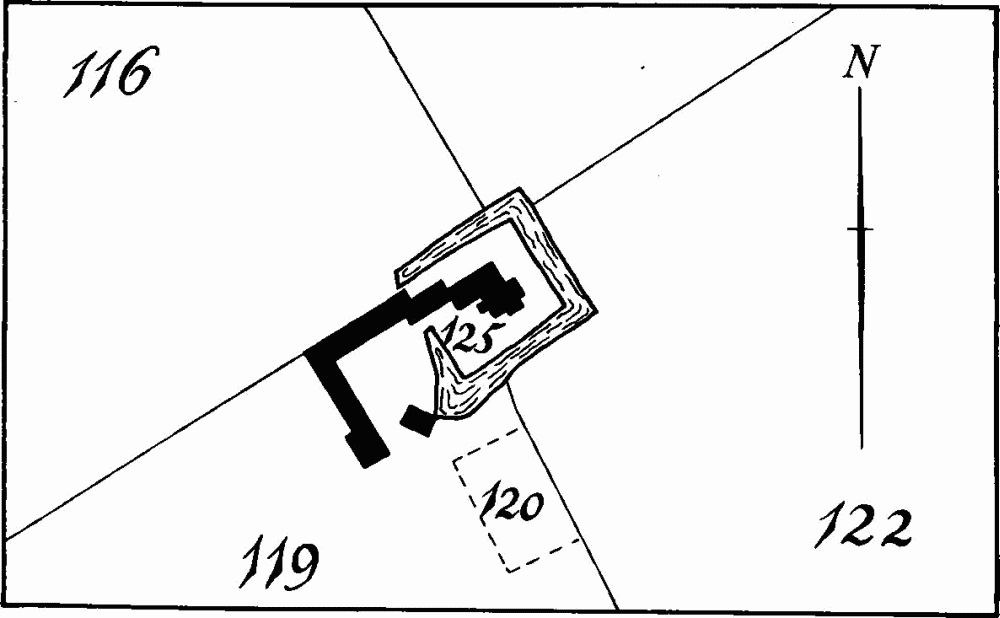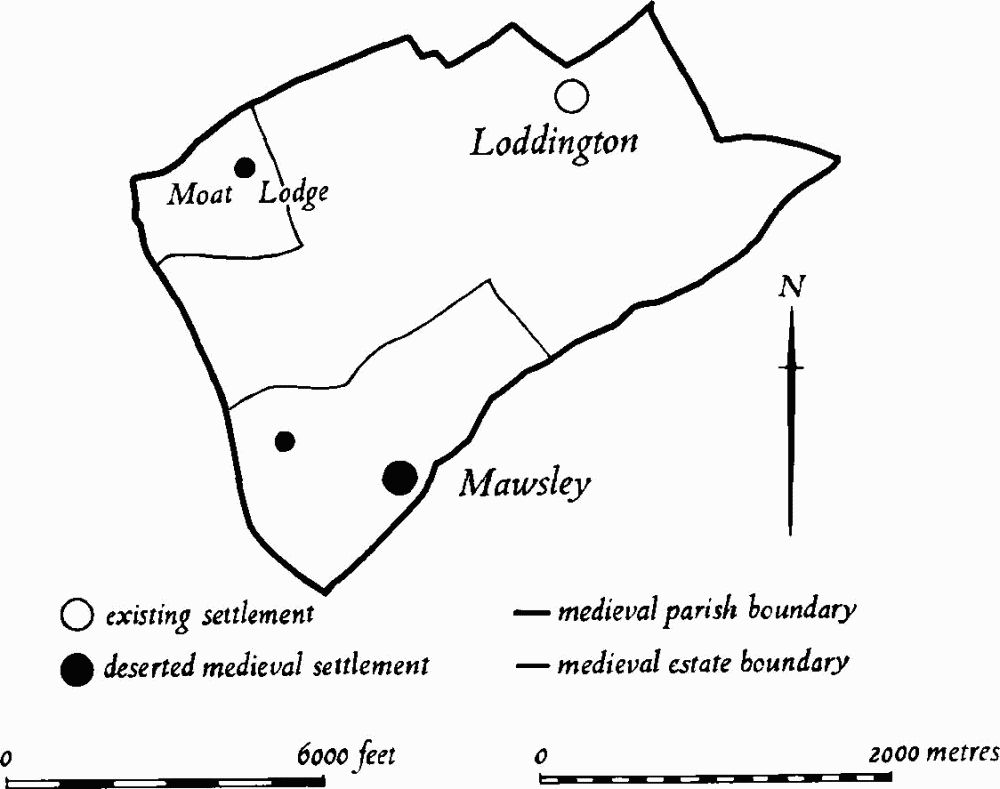An Inventory of the Historical Monuments in the County of Northamptonshire, Volume 2, Archaeological Sites in Central Northamptonshire. Originally published by Her Majesty's Stationery Office, London, 1979.
This free content was digitised by double rekeying. All rights reserved.
'Loddington', in An Inventory of the Historical Monuments in the County of Northamptonshire, Volume 2, Archaeological Sites in Central Northamptonshire(London, 1979), British History Online https://prod.british-history.ac.uk/rchme/northants/vol2/pp105-107 [accessed 28 April 2025].
'Loddington', in An Inventory of the Historical Monuments in the County of Northamptonshire, Volume 2, Archaeological Sites in Central Northamptonshire(London, 1979), British History Online, accessed April 28, 2025, https://prod.british-history.ac.uk/rchme/northants/vol2/pp105-107.
"Loddington". An Inventory of the Historical Monuments in the County of Northamptonshire, Volume 2, Archaeological Sites in Central Northamptonshire. (London, 1979), British History Online. Web. 28 April 2025. https://prod.british-history.ac.uk/rchme/northants/vol2/pp105-107.
In this section
39 LODDINGTON
(OS 1:10000 a SP 77 NE, b SP 87 NW)

Fig. 97 Loddington (9) Moat (drawing based on Tithe Map of 1843)
The roughly rectangular parish occupies over 500 hectares some distance to the S. of Rothwell. From a maximum height of over 152 m. above OD in the W., the land slopes gently to the N.E. to 90 m. above OD, and is deeply cut by three parallel N.E.-flowing streams. The greater part of the parish is on Northampton Sand except where it is covered by Boulder Clay in the extreme W., and where the down-cutting of the streams has exposed Upper Lias Clay on the valley sides. Extensive ironstonequarrying in the early 20th century led to the discovery of prehistoric and Roman material (1–3), but almost certainly much more was destroyed without record. As well as the village of Loddington the parish also contains the site of the former village of Mawsley (6) which, to gether with the abandoned medieval farmstead (8), appears to have occupied a separate area of land in the S.W. The moat (9), now destroyed, in the N.W. of the parish was probably another medieval settlement, also with its own land unit (Fig. 98).
Prehistoric and Roman
A 'late Roman' coin has been found S.W. of the village (SP 812779; OS Record Cards).
b(1) Bronze Age Burial (about SP 807783; Plate 30), found in 1903, presumably during ironstonequarrying, 700 m. W. of the church. A late Beaker (NM) was discovered, but no further details are known (PSA, 19 (1903), 312–3).
(2) Bronze Age Burial (unlocated, but probably in the same area as (1)). A Collared Urn, one of the Primary Series, was found in the parish in 1904. It contained a cremation burial (NM; PPS, 27 (1961), 297, No. 120).
b(3) Roman Well (?) (perhaps SP 815780), said to have been found S. of the church, presumably during ironstone-mining, before 1904. It was 'walled' and contained a skeleton and fragments of several 'urns' (T.J. George, Arch. Survey of Northants., (1904), 17; OS Record Cards).
a(4) Roman Settlement (?) (SP 79867647), within Mawsley Wood, in the W. of the parish, on Boulder Clay at 137 m. above OD. Roman pottery and a piece of flue tile were found here in 1960, and more pottery was discovered in 1969 (KM; OS Record Cards).
Medieval and Later
(5) Anglo-Saxon Burial (unlocated), found about 1903, presumably during ironstone-mining. Finds included a shield-boss, two spearheads classified as Swanton's C2 and C3, an iron fitting, perhaps part of a coffin, and an iron plate, possibly a shield grip. The items probably comprise a single grave group (Meaney, Gazetteer, 192; Ant. J., 43 (1963), 46; M.J. Swanton Spearheads of the Anglo-Saxon Settlements, (1973), 159, 163; BAR, 7 (1974), 62).
b(6) Deserted Village of Mawsley (SP 805763; Fig. 98; Plate 16), on the side of a shallow valley, on clay at 122 m. above OD.
Records of the history of this village are few and it is impossible to estimate its population, as it is usually listed with Faxton, now also deserted, in Lamport parish to the W. The first reference to Mawsley as a settlement is in 1185. However part of the Hundred of Orlingbury was known as Malesle or Maleslea in the late 11th century which suggests an earlier origin for the village. Mawsley may be listed silently in Domesday Book but is recorded separately in the Nomina Villarum of 1316. Thereafter all national taxation records list it together with Faxton. By the early 18th century only one or two families were living there, and one of these perhaps lived in Mawsley Cottage, now destroyed, which lay to the N.W. of the village site (at SP 802766). Though the population had risen to eighteen in 1841 this only reflects the establishment of outlying farms in the general area (K.J. Allison et al., The Deserted Villages of Northamptonshire, (1966), 42; PN Northants., 122, 128–9).
Air photographs (RAF VAP CPE/UK/1925, 1225–6; 541/612, 3005–6; F21 540/RAF/1312, 0156–8) show an area of very distrubed ground, immediately S. of Birch Spinney, with an irregular bank and ditch separating it from the adjacent ridge-and-furrow to the S. Since destruction by ploughing large quantities of stone rubble and medieval pottery have been found on the site (BNFAS, 3 (1969), 24; OS Record Cards). The field in which it lies was known as Top Meadow in 1828 (NRO, Map of Mawsley).
It is possible to reconstruct the probable boundaries of the lands of Mawsley from a series of maps of 1727, 1828, 1839 and 1843 of Loddington and Mawsley (NRO) (Fig. 98).

Fig. 98 Loddington Medieval settlements and estates
b(7) Fishpond (?) (SP 809766), S. of Mawsley Lodge and close to a N.E.-flowing stream, on clay at 114 m. above OD. As it lies only 500 m. N.E. of the site of, and within the territory of Mawsley (6), the pond may be associated with the village. It consists of a large sub-rectangular pond, 140 m. long and 50 m. wide (RAF VAP CPE/UK/1925, 1225–6; 541/612, 3005–6).
a(8) Deserted Farmstead (SP 79867646; Fig. 98), in the N. part of Mawsley Wood, on Boulder Clay at 450 m. above OD. A small rectangular enclosure, bounded by a low bank only 0.25 m. high, is just visible in dense undergrowth. Within it is a large amount of 16th and 17th-century pottery as well as 17th and 18th-century brick, tile and building stone. It is perhaps the site of a late medieval farmstead which lay within the former land of the deserted village of Mawsley.
a(9) Moat (SP 796781; Figs. 97 and 98), in the extreme W. of the parish, on Boulder Clay at 140 m. above OD. It was destroyed, without record, by ironstonequarrying shortly before 1965. It is marked on the 1843 Tithe Map of Loddington (NRO) which depicts it as a rectangular enclosure approximately 50 m. by 35 m., orientated N.E.–S.W. and completely surrounded by a water-filled ditch some 10 m. wide. There was a gap in the centre of the S.W. side and the S. corner appears to have been widened to form a pond. Farm buildings stood within it and immediately to the S.W. It is visible on air photographs taken in 1947 (RAF VAP CPE/UK/ 1926, 1223–4) but owing to the presence of trees and buildings no additional information can be gained. It was then known as Moat Lodge and OS maps mark an L-shaped pond on the site.
Nothing is known of its history but it was presumably the site of an isolated medieval farmstead the land of which covered some 40 hectares around it. The E. boundary of the land is marked on a map of part of Loddington of 1727 (NRO). In the 18th century Bridges noted that this moat surrounded a 'singular house' built by one Gilbert Clarke (J. Bridges, Hist of Northants., II (1791), 42). For ridge-and-furrow in this area, see (12) below.
b(10) Hollow-Way (SP 812782), lies S.W. of Loddington village and within the Park. It extends S.W. from the N.W. corner of the triangular area opposite the church for some 250 m. until it meets the existing road. It represents an old line of a road leading into the village, and adds weight to the evidence from the existing morphology that there was once a large green between the Hall and the village where three roads met (RAF VAP 541/612, 4003–4).
b(11) Pond (SP 812783), immediately N.W. of Loddington Hall in the valley of a N.E.-flowing stream. It is now a rectangular depression, 150 m. long and 20 m. wide, roughly parallel to and S.E. of the existing stream. It is not marked on the Tithe Map of Loddington of 1843 (NRO) but the area between it and the stream was then called The Island, suggesting that the pond was in existence by that date. It may be medieval in origin (RAF VAP 541/612, 4003–4).
(12) Cultivation Remains. The common fields of the parish were enclosed in the middle of the 17th century (J. Bridges, Hist. of Northants., II (1791), 42; see also NRO, Map of Loddington, 1727).
Only a few fragments of the ridge-and-furrow of these fields survive or can be traced from air photographs, and no pattern can be deduced from these. This is partly because large areas have been worked for ironstone. A few areas of ridge-and-furrow survive in the extreme N.W. of the parish around Loddington Lodge (SP 793778) and seem to fit with the existing field pattern. They are probably associated with the moated farmstead (9) which was once in this area. A little ridge-and-furrow also survives in the S.W. of the parish and probably represents the medieval fields of the deserted village of Mawsley (6). It appears to be arranged in end-on furlongs with the ridges running across the contours. Nothing is known of the date of enclosure of these fields (RAF VAP CPE/UK/1925, 1223–9, 4363–8; F21 540/RAF/ 1312, 0140–6, 0154–60; F21 82/RAF/865, 0413–22; 541/612, 3001–8, 4001–8; 541/602, 4189–94).